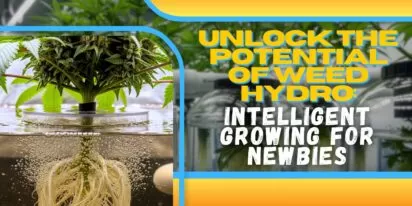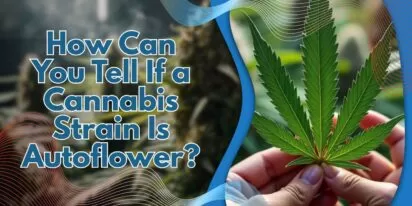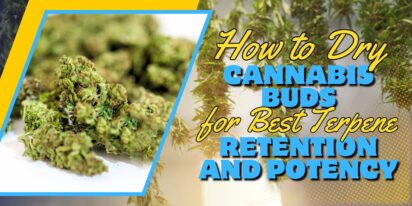Table of Contents

Like any other agricultural product, growing cannabis also involve common problems that every grower should be aware of. Yes, cannabis growers, most especially first-timers, face difficulties growing marijuana because of nutrient issues, overwatering or underwatering, pests, and other issues.
It’s a good thing that marijuana plants are resilient, with innate capability to withstand harsh environments or invaders. When you’re faced with common cannabis plant problems, don’t panic. Assess the signs and make an analysis of what’s happening to your marijuana plants so you can take the appropriate course of actions. Let’s learn the most common marijuana plant problems now!
Overwatering and underwatering are commonly experienced by novice cannabis growers. Watering issues may cause multiple symptoms. They can even cause stunted growth. The contributing factors to successful cannabis grow include adequate lighting, airflow, nutrients, and humidity. However, water is one of the crucial aspects to keep your marijuana plants happy, healthy, and strong.
Let’s check the signs of overwatering and underwatering so you’ll know when to act accordingly.
You might be worrying that your marijuana plants need a constant supply of water. However, it’s a pitfall that most novice usually falls into. Marijuana plants use their roots to breath air aside from uptaking water. So if the root system of your cannabis plants is constantly getting swamped, they’ll likely drown.
As the opposite of overwatering, underwatering occurs when you simply are unable to meet your cannabis plant’s demands. If your plants don’t get adequate water, their root system will start to dry up, leading to stunted growth and reduced yield.
Novice growers usually encounter nutrient burn in growing cannabis plants. It is often a result of overzealous feeding of marijuana plants. It usually occurs when there’s a too much hydroponic solution that is applied, wherein the roots take more nutrients than what the cannabis plant can use. Nutrient burn also happens when the plants are cultivated in fresh compost manure as well as other plant mediums with too high nutrient levels. Remember that cannabis plants don’t really need plenty of nutrients in all stages of development. Nutrient burn is caused by feeding cannabis plants with a too strong nutrient mix or fertilizing too frequently.
Nitrogen toxicity may result in feeding your cannabis plants too much nitrogen. Nitrogen is a macronutrient that marijuana plants use to grow and survive. Most nutrient bottles have three numbers that are listed next to each other, like N-P-K ratios. They symbolize the three main macronutrients including Nitrogen, Phosphorus, and Potassium.
White powdery mildew is usually a result of too high humidity in the grow room, accompanied with low or absence of airflow. It is one of the common fungi infestations you’ll encounter as a marijuana grower. In the long run, the powdery substance continues to spread to the other parts of the plants and produce more mildew like eating up your marijuana plants.
Bud rot is caused by levels of high humidity accompanied by low airflow. It can also be caused by overwatering, which results in rotting of cannabis buds. The rotting starts from the inside, slowly turning brown and moldy.
Sciarid flies or fungus gnats are small flying insects with a 3 and 5mm size. These are small and dark-colored flies that usually appear and spread on the lower parts of cannabis plants. It also happens in the substrate. Fungus gnats feed on sugars, decomposing organic material, and molasses. High humidity and low light intensity make your cannabis plants susceptible to fungus gnats. Warm temperatures also predispose your plants to this condition.
Fungus gnats are common guests in indoor crops and greenhouses. Hydroponic systems are highly sensitive to sciarid flies. Organic substrates with excessive moisture make an excellent habitat for fungus gnats.
Female sciarid flies lay around 50 to 200 eggs in the substrate and hatch after 48 to 72 hours in favorable conditions. For the next 2 to 3 weeks, there are four different stages of development that larvae pass through. The propagation is fast enough, which highly depends on the environmental conditions.
Heat stress also occurs when a cannabis plant is placed too close or directly to the heat lamp. Heat stress also refers to a form of stress on cannabis plants as a result of too high temperature in your grow room. The ideal temperature in the grow room should be close o 75 degrees Fahrenheit at all time. However, it reaches below 80 degrees Fahrenheit, the cannabis plant starts to slow down.
Fusarium is a genus of filamentous fungi living in the soil and may affect your cannabis plants. Most species are considered saprophytes, feeding on the debris of other soil organisms. Fusarium eventually develops as parasites, producing mycotoxins that can also affect humans causing skin infections. The colonization of fusarium takes place at the level of the soil, through the shallow roots or the stem, which moves all parts of the cannabis plant via the vascular bundles.
Aphids affect marijuana growers around the world. Aphids are a common garden pest with detrimental effects on cannabis plants. They are small sap-sucking insects which are destructive on cultivated plants. Aphids vary in size from 1 to 10 mm. It can be green, white, red, or black in color with two whip-like antennae and tube-like structures referred to as cornicles.
In early spring, winged female aphids hatch, giving birth to female nymphs. Only within a few weeks, young aphids are born. The number of aphids rises dramatically in a relatively short period of time. Aphids develop as males and females, mating to produce overwintering eggs by the end of summer.
Growing cannabis plants with the wrong pH level is a common reason why people experience cannabis plant issues. To prevent health problems, mix nutrients and water at the right pH. Remember that the pH level affects the absorption of nutrients by your cannabis plants. Invest in a reliable pH meter to ensure the water and soil has a neutral pH which is 7.
Growing cannabis is a tricky process, and there are so many things that can go wrong. Too little or too much water, heat, or fertilizer, mildew, mites, viruses, mold, issues with ozone exposure, fluctuations in pH, and nutrient deficiencies can jeopardize your yield and the quality of the final product. Keep these quick fixes in mind and research intensively if ever you encounter any of these common marijuana plant problems.

Curious about growing weed in a healthy, effective way? Welcome to the realm of weed hydro! This method uses water instead of soil, delivering n

Peyote Zkittlez is a unique cannabis strain that has quickly gained dedicated followers among enthusiasts and patients alike. Its parentage—Zk

As growers, we want strains that work well, are strong, and are of good quality. Autoflowering cannabis strains are a big step forward for both

Pot growers always ask the same basic question: How much weed does a weed plant produce? The answer is complex and depends on a multitude of var

Ever had the room spin after a few hits? You're not alone. Figuring out how to prevent getting dizzy high can make your cannabis experience a wh

Drying cannabis properly is a critical process in preserving the plant's full aroma and flavor and its psychoactive abilities. Tampering with th

Ever caught yourself a bit too high and all of a sudden in need of being normal? Whether you're heading out for munchies or bumping into someone

Looking for sage advice on how not to get pinched with weed without batting an eye? Attempting to protect your stash from gossipy roommates, sno

Nutrient lockout, also known as nutrient binding or chemical antagonism, is a significant issue in cannabis cultivation that negatively impacts

Germination is the most critical initial stage in growing healthy, high-quality cannabis plants. During germination, the dormant seed becomes a
Are You 18 Or Over?
By selecting “Continue”, you confirm that you are at least 18 years of age and legally permitted to access cannabis related content in your region.
By using Rocketseeds.com, you agree to our legal disclaimer.
Excellent blog here Also your website loads up very fast What web host are you using Can I get your affiliate link to your host I wish my web site loaded up as quickly as yours lol
Your writing is not only informative but also incredibly inspiring. You have a knack for sparking curiosity and encouraging critical thinking. Thank you for being such a positive influence!
Simply wish to say your article is as amazing The clearness in your post is just nice and i could assume youre an expert on this subject Well with your permission let me to grab your feed to keep updated with forthcoming post Thanks a million and please carry on the gratifying work
Somebody essentially lend a hand to make significantly articles Id state That is the very first time I frequented your website page and up to now I surprised with the research you made to make this actual submit amazing Wonderful task
Your blog is a beacon of light in the often murky waters of online content. Your thoughtful analysis and insightful commentary never fail to leave a lasting impression. Keep up the amazing work!
Thank you for the auspicious writeup It in fact was a amusement account it Look advanced to more added agreeable from you By the way how could we communicate
Your blog is a constant source of inspiration for me. Your passion for your subject matter shines through in every post, and it’s clear that you genuinely care about making a positive impact on your readers.
Your blog is a constant source of inspiration for me. Your passion for your subject matter is palpable, and it’s clear that you pour your heart and soul into every post. Keep up the incredible work!
Your articles never fail to captivate me. Each one is a testament to your expertise and dedication to your craft. Thank you for sharing your wisdom with the world.
Your blog is a testament to your dedication to your craft. Your commitment to excellence is evident in every aspect of your writing. Thank you for being such a positive influence in the online community.
Your writing has a way of resonating with me on a deep level. I appreciate the honesty and authenticity you bring to every post. Thank you for sharing your journey with us.
Your blog is a true gem in the world of online content. I’m continually impressed by the depth of your research and the clarity of your writing. Thank you for sharing your wisdom with us.
Hi i think that i saw you visited my web site thus i came to Return the favore Im attempting to find things to enhance my siteI suppose its ok to use a few of your ideas
Somebody essentially help to make significantly articles Id state This is the first time I frequented your web page and up to now I surprised with the research you made to make this actual post incredible Fantastic job
Usually I do not read article on blogs however I would like to say that this writeup very compelled me to take a look at and do so Your writing taste has been amazed me Thanks quite nice post
Your blog has quickly become one of my favorites. Your writing is both insightful and thought-provoking, and I always come away from your posts feeling inspired. Keep up the phenomenal work!
Every time I visit your website, I’m greeted with thought-provoking content and impeccable writing. You truly have a gift for articulating complex ideas in a clear and engaging manner.
Hey there You have done a fantastic job I will certainly digg it and personally recommend to my friends Im confident theyll be benefited from this site
I have read some excellent stuff here Definitely value bookmarking for revisiting I wonder how much effort you put to make the sort of excellent informative website
Nice blog here Also your site loads up very fast What host are you using Can I get your affiliate link to your host I wish my site loaded up as quickly as yours lol
What i do not understood is in truth how you are not actually a lot more smartlyliked than you may be now You are very intelligent You realize therefore significantly in the case of this topic produced me individually imagine it from numerous numerous angles Its like men and women dont seem to be fascinated until it is one thing to do with Woman gaga Your own stuffs nice All the time care for it up
Your blog is a beacon of light in the often murky waters of online content. Your thoughtful analysis and insightful commentary never fail to leave a lasting impression. Keep up the amazing work!
Your blog is a breath of fresh air in the often stagnant world of online content. Your thoughtful analysis and insightful commentary never fail to leave a lasting impression. Thank you for sharing your wisdom with us.
Your blog is a beacon of light in the often murky waters of online content. Your thoughtful analysis and insightful commentary never fail to leave a lasting impression. Keep up the amazing work!
Usually I do not read article on blogs however I would like to say that this writeup very compelled me to take a look at and do it Your writing style has been amazed me Thank you very nice article
Your writing has a way of resonating with me on a deep level. I appreciate the honesty and authenticity you bring to every post. Thank you for sharing your journey with us.
This hydroponics guide is quite the buzz, seriously! Who knew growing weed without dirt could be so complicated yet potentially rewarding? The breakdown of systems like DWC and NFT is helpful, though I suspect my cat might confuse the air pump for a toy. The idea of cleaner buds is tempting, especially since explaining hydro weed to my non-growing friends might get messy. And the bit about potential dizziness from hydro weed? Perfect, now I have an excuse for why I always stumble a bit after a grow session. Still, the promise of faster grows and higher yields is hard to ignore, even if it means more trips to the pH meter than to the coffee shop. Overall, a cultivating read for the curious grower!